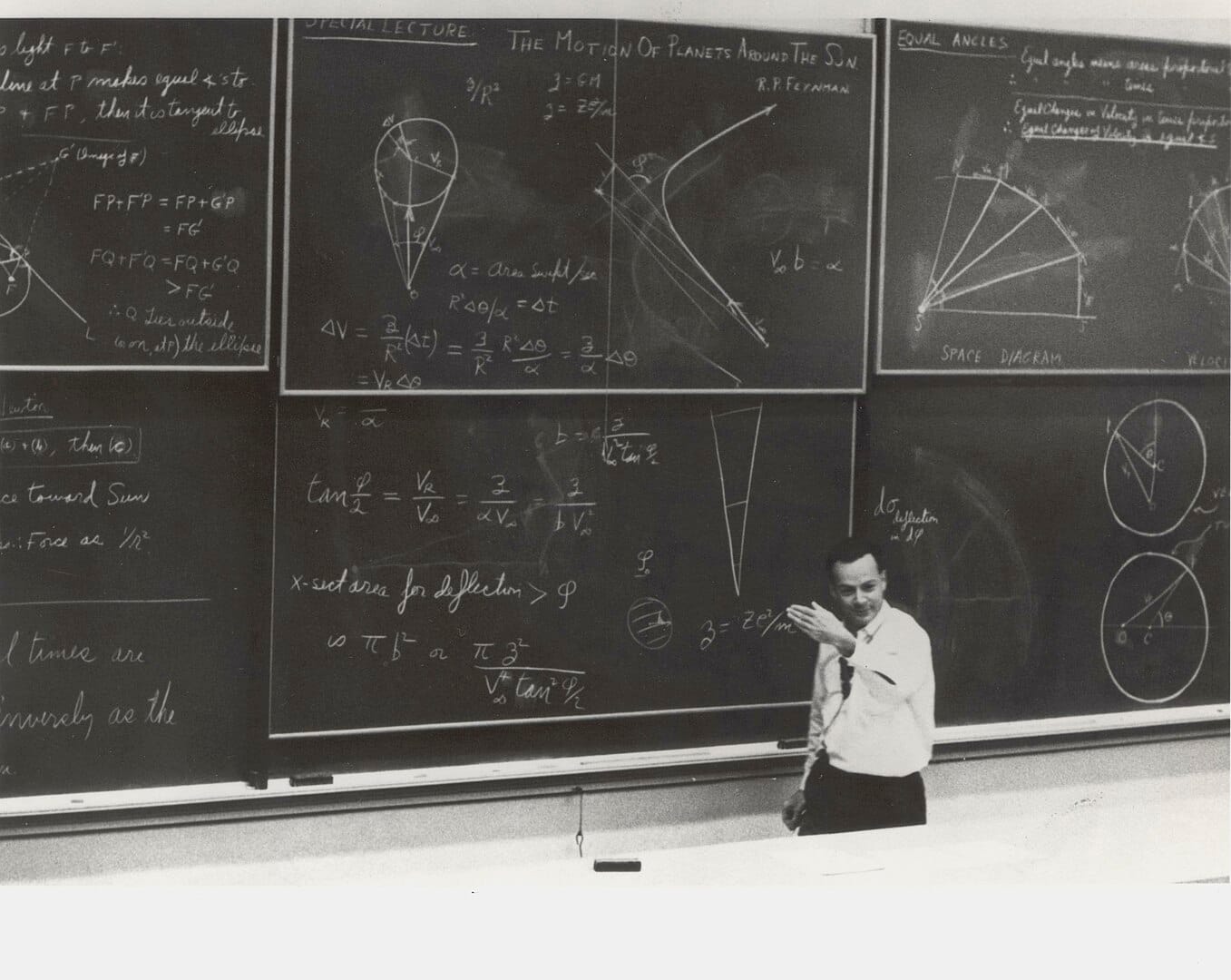Richard Feynman (1918–1988) was one of the most influential and charismatic physicists of the 20th century. His legacy extends beyond his fundamental contributions to theoretical physics: he was a brilliant communicator, an advocate for scientific curiosity, and an innovator who planted the seeds for modern disciplines such as quantum computing and nanotechnology. This article delves deeply into Feynman’s life, discoveries, and impact on the scientific and technological fields.
A Brilliant Mind from the Start
Richard Phillips Feynman was born on May 11, 1918, in Queens, New York, to a Jewish family. From an early age, he showed an extraordinary talent for mathematics and engineering, combined with an insatiable curiosity to understand how the world worked.
- Early Education: Feynman excelled in high school, developing skills in radio repair and an interest in mechanics and electricity.
- Academic Training: He studied physics at the Massachusetts Institute of Technology (MIT) and completed his Ph.D. at Princeton University, where he worked under the supervision of John Archibald Wheeler. During this time, he began formulating ideas that would later change physics.
Key Contributions to Physics
Quantum Electrodynamics (QED)
Feynman’s most well-known work is his reformulation of quantum electrodynamics (QED), the theory that describes how light (photons) and matter (electrons) interact. His innovative approach resolved complex theoretical problems related to the mathematical infinities that arose in calculations.
- He introduced Feynman diagrams, a visual tool that simplifies calculations of interactions between subatomic particles. These diagrams have become a standard tool in theoretical physics.
- He received the Nobel Prize in Physics in 1965, along with Julian Schwinger and Sin-Itiro Tomonaga, for his work in QED.
Feynman’s Path Integral
Feynman proposed a new way of understanding quantum mechanics known as the path integral. In this formulation, a particle does not follow a single path between two points, but rather explores all possible paths, and its behavior is determined by summing the probabilities associated with each path. This concept revolutionized the way quantum systems are described.
The Manhattan Project and the Development of the Atomic Bomb
During World War II, Feynman was recruited to work on the Manhattan Project, the United States’ secret effort to develop the first atomic bomb. At Los Alamos, New Mexico, Feynman played a key role in theoretical calculations and problem-solving related to nuclear fission.
Although his work on the project brought him recognition, it also marked a moment of ethical conflict in his life as he reflected on the destructive implications of the atomic bomb.
Feynman and Computing: A Visionary of Quantum Technology
Richard Feynman not only changed our understanding of physics but also anticipated technologies now in full development.
Quantum Computing
In 1981, during a lecture at MIT, Feynman first proposed the idea of a quantum computer, a machine that would use principles of quantum mechanics to perform calculations impossible for classical computers.
- His vision of quantum computers arose from the difficulty of simulating quantum systems on conventional computers.
- Today, tech giants like Google, IBM, and Microsoft are working on developing quantum computers, following the path Feynman helped to open.
Nanotechnology
Feynman is also considered a precursor to nanotechnology. In his famous 1959 speech titled “There’s Plenty of Room at the Bottom”, he envisioned a world where we could manipulate individual atoms to create new materials and devices.
- He predicted advances such as molecular machines and information storage in microscopic structures.
- His vision inspired generations of scientists in the field of nanotechnology.
The Master of Science Communication
In addition to his brilliant career as a physicist, Feynman was an extraordinary communicator. He had the unique ability to explain complex concepts clearly and accessibly, inspiring both students and the general public.
Books and Teachings
- His series of books “The Feynman Lectures on Physics” is considered a classic in physics education and continues to be widely used in universities around the world.
- Other books such as “Surely You’re Joking, Mr. Feynman!” and “What Do You Care What Other People Think?” offer a personal glimpse into his life and his irreverent approach to science.
Teaching Style
Feynman adopted a pragmatic approach to problem-solving, known as the Feynman method, which involves:
- Identifying the problem.
- Explaining it in the simplest way possible.
- Reviewing and adjusting the explanation until it is completely understandable.
A Unique Personality
Richard Feynman was not a conventional physicist. His personality was a mix of humor, curiosity, and rebelliousness that made him stand out among his peers.
Hobbies and Interests
- He was an excellent musician and played the drums, participating in samba festivals in Brazil.
- He was passionate about solving puzzles and cracking safes, a talent he developed during his time at Los Alamos.
Life Philosophy
Feynman believed in the importance of questioning everything, even established theories. His scientific approach was based on observation and skepticism, allowing him to advance in areas where others feared to explore.
Legacy and Impact
The impact of Richard Feynman transcends physics. His ideas have influenced fields such as computing, molecular biology, and engineering. His emphasis on critical thinking and his love for knowledge continue to inspire scientists, technologists, and educators worldwide.
Today:
- Feynman diagrams are standard tools in theoretical physics.
- Quantum computers and nanotechnology, concepts he envisioned, are at the forefront of technological research.
- His teaching style is a model for educators looking to inspire the next generation of scientists.
Conclusion
Richard Feynman was more than just a brilliant physicist; he was a visionary who changed our way of understanding the world and paved the way for technologies that are now transforming our lives. His legacy lies not only in his scientific discoveries but also in his passion for teaching and his ability to make science exciting and accessible to everyone. Feynman reminds us that curiosity, creativity, and the relentless pursuit of knowledge are the driving forces behind human progress.

